It can be hard to find the time to bake a cake or pie at home. Besides, who needs to do that when you’ve got a great local bakery to turn to? They’re churning out an impossible amount of freshly baked cakes, pies, cookies every single day. Or are they?
It turns out, any grocery store bakery or local bakery that you turn to for “fresh” or “baked in-house” items is probably relying heavily on their walk-in freezer. Before you feel betrayed, this actually isn’t a bad thing. All of this is not only legal and safe, but if done correctly and used within a certain time frame, these items freeze perfectly well, and taste just as incredible after thawing as they would if they were sold to you day-of. Here are nine things your bakery is likely freezing, and how you can use your freezer at home to make baking a little more manageable.
Pies
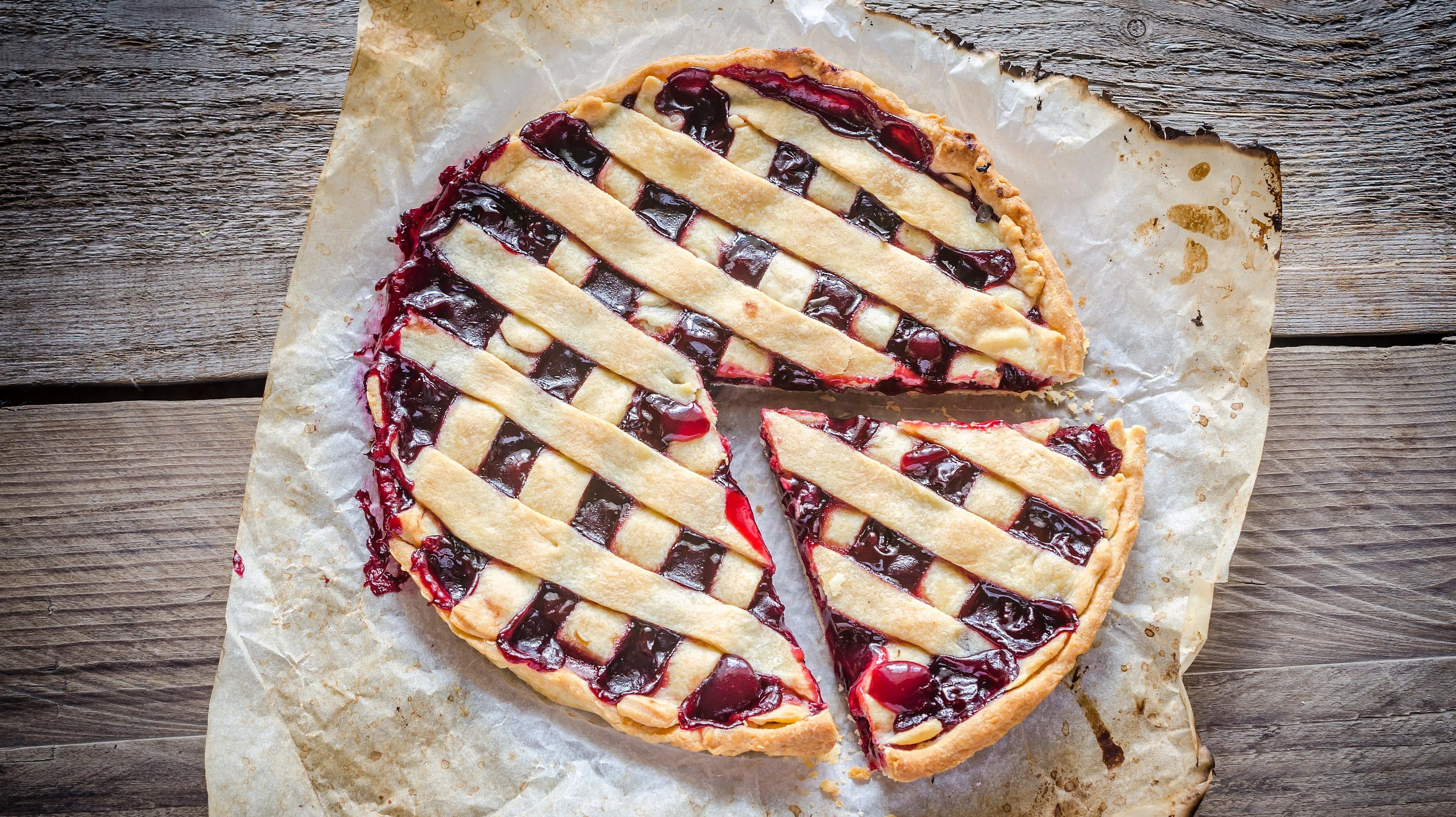
You better believe every bakery is stocking up their pie reserves in the freezer so they don’t miss the rush. Fruit pies are often composed of a flaky crust and a simple fruit filling. Bakeries will prepare the entire pie as if they were going to bake it–fit the pie shell, fill it with a cold pie filling so the fat in the crust doesn’t melt, and add a top crust if it’s called for. The whole, raw pie is then frozen. When the big day arrives, the pie is simply egg washed and popped into the oven, no thawing required.
Cake layers, brownies, and bars
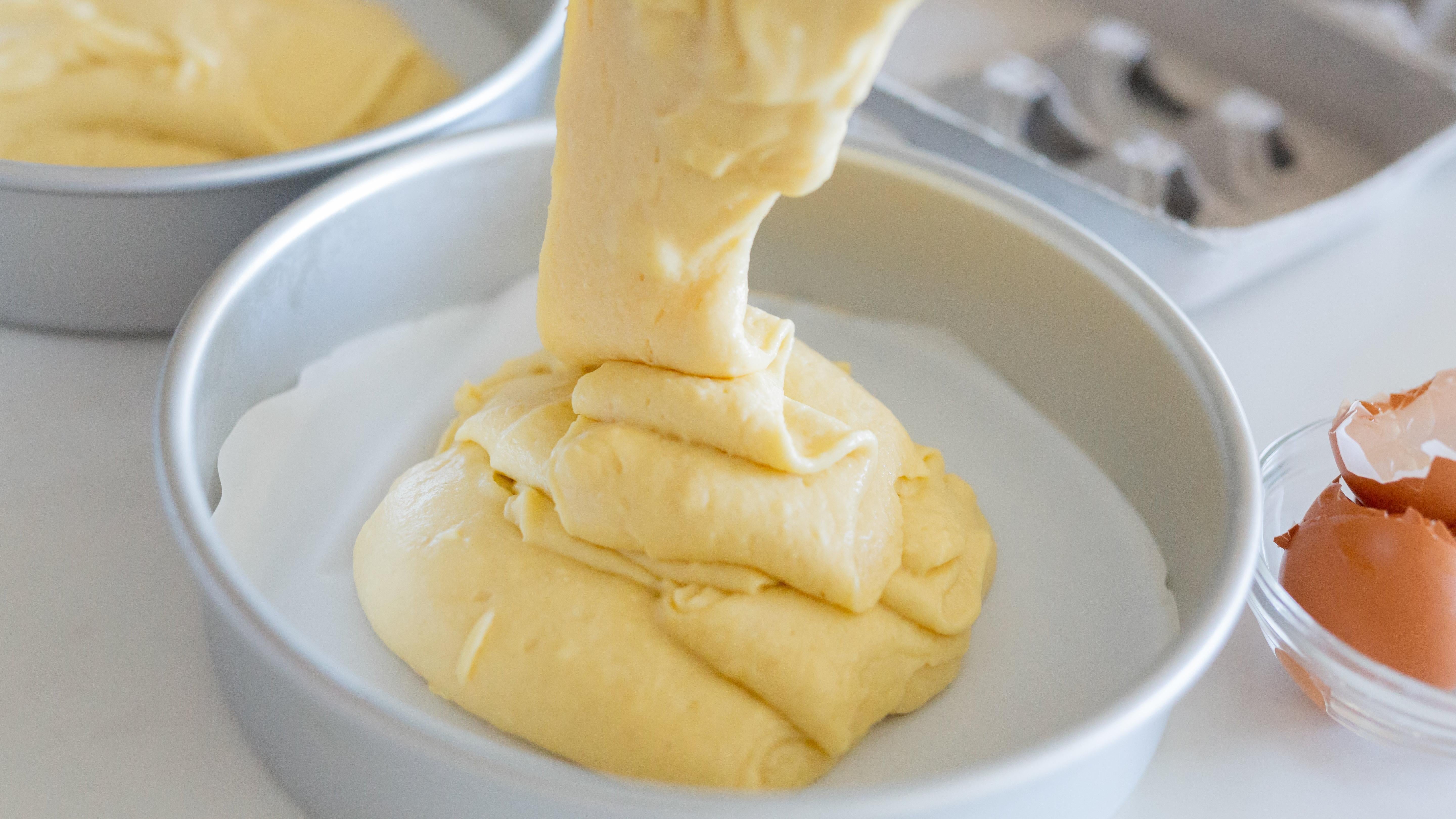
Building an entire cake from batter to buttercream flowers is not a quick affair. Cake layers, brownies, and other bars take up time and space both in the oven and out. Instead of make these daily, many bakeries will bake up massive batches intermittently, far more than they’d need in one day, then cool, wrap, and freeze them. Other bakeries will simply order them pre-cooked and frozen from large commissary kitchens. Cakes and brownies freeze and thaw notably well, plus they cut much cleaner chilled than when they’re room temperature.
Freezing cake layers helps break up the process, and you should do it at home too. A week or so before you plan on serving that impressive four layer cake, bake the layers, cool them completely, and double wrap them individually in plastic wrap. Load them into the freezer on a flat surface. When you’re ready to assemble the cake, pull them out of the freezer and let them semi-thaw on the counter for 30 minutes. Well-wrapped, frozen cake layers keep well for about three months in the freezer, but I recommend using them within a couple weeks so they don’t lose too much moisture.
Croissants, danishes, and other unbaked pastries
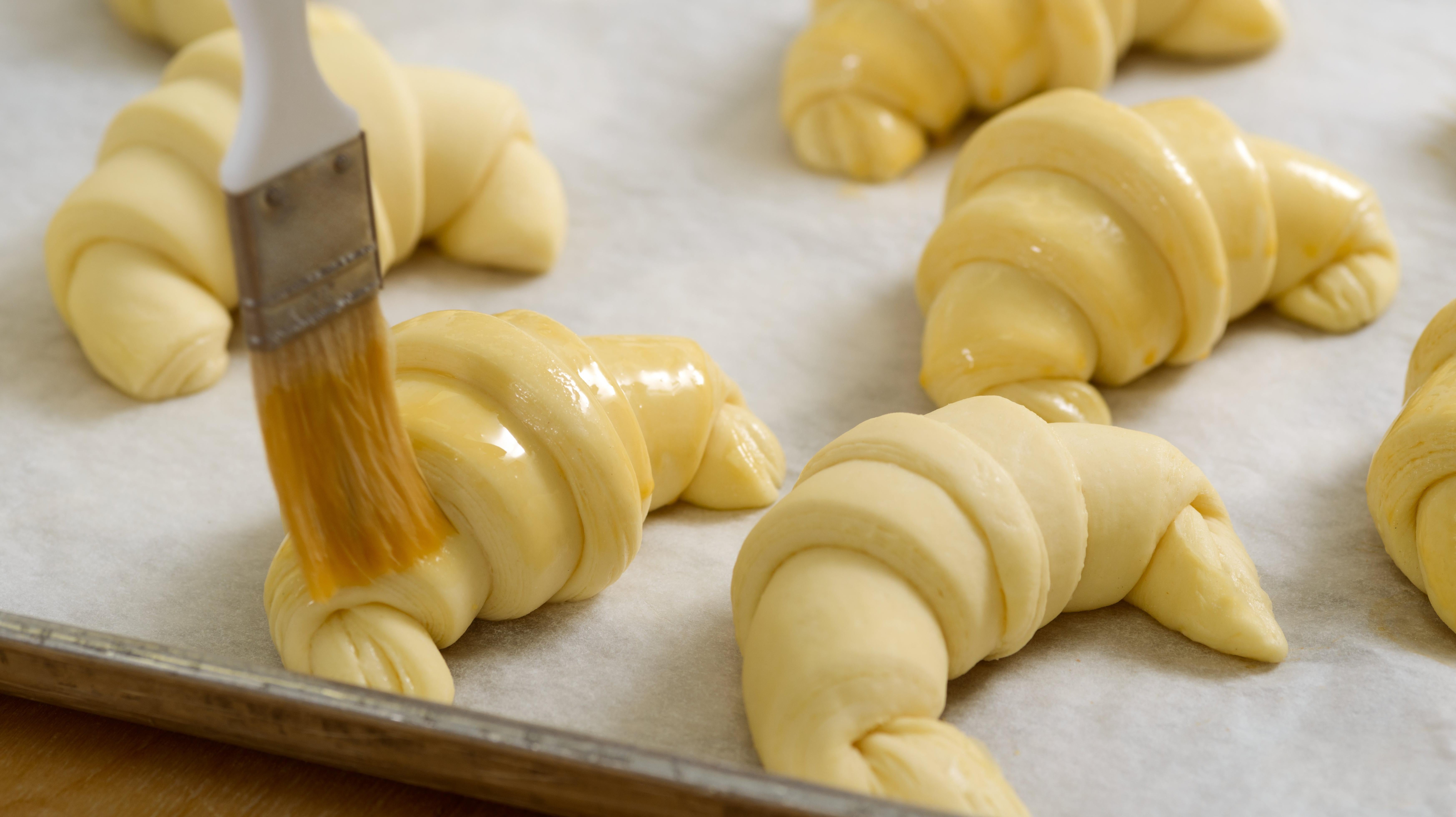
Laminated, yeast-raised pastries like croissants, danishes, and kouign amann (and most flaky pastries) can be frozen raw, directly after they’re shaped and before they do a second proof. The yeast will still be alive in the freezer but fermentation will pause. Bakeries will load up sheet tray after sheet tray of unbaked almond croissants, or filled raspberry and cheese danishes, tie them up in large plastic bags and freeze them. The evening before baking day, the pastries are lined up on a sheet tray and transferred to the fridge, leaving plenty of space in between for rising. A couple hours before baking, the thawed pastries proof at room temperature until puffy and ready to bake.
You can freeze pastries at home in the same manner. Complete lamination, cut, and shape the dough. If the dough is filled with fruit, chocolate, or cheese, assess if it freezes well (all of those mentioned do) and go ahead and add it. Arrange the pastries on a sheet tray and put the entire tray in the freezer for a couple hours until they’re solid. Dump all of the pastries into a freezer bag or container and return them to the freezer. The night before baking, move the amount of pastries you need to the refrigerator. About three hours before baking, bring the thawed pastries out to room temperature. Allow them to proof appropriately, egg wash them, and bake as usual.
Frostings and icings
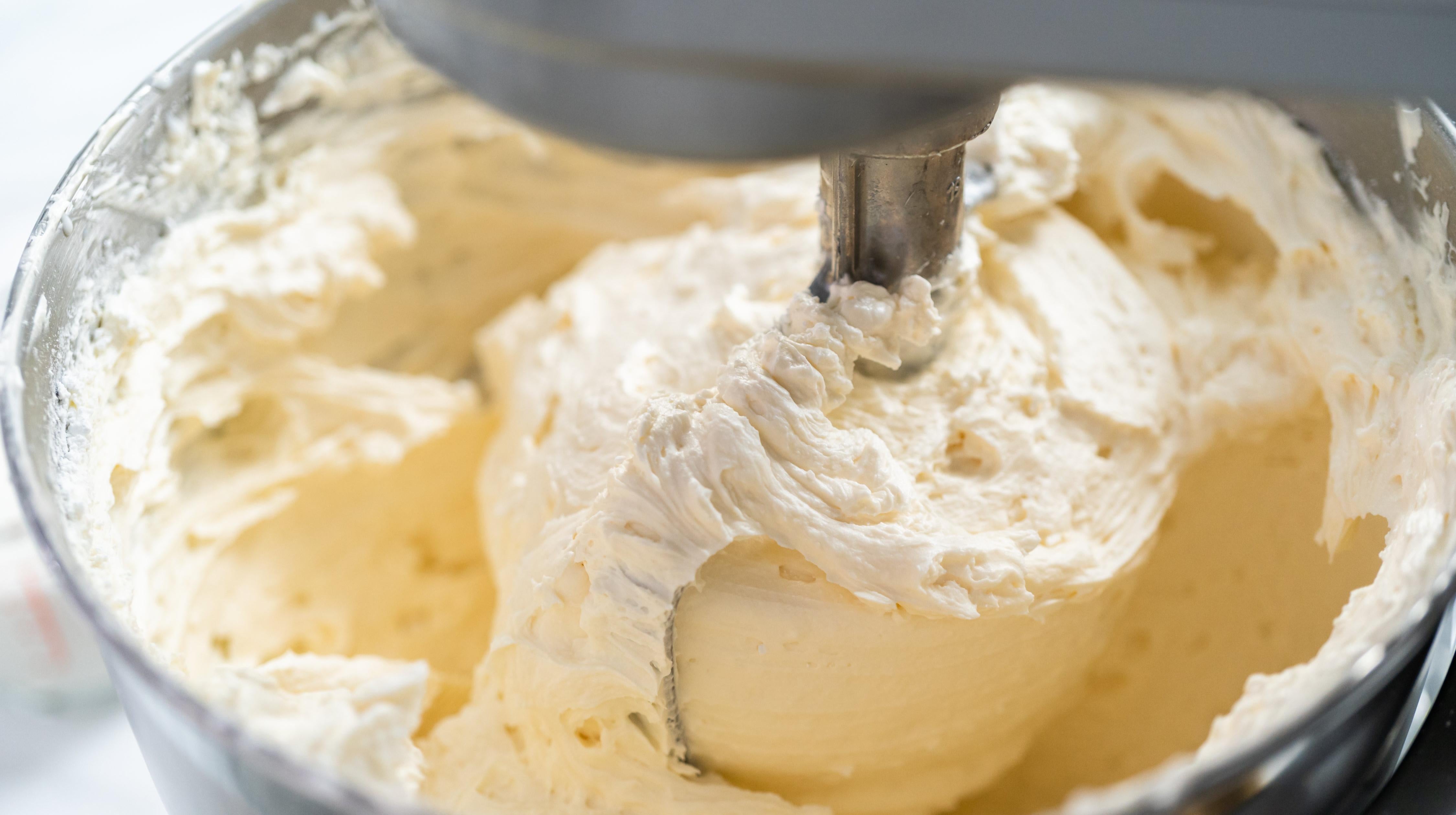
Most frostings have butter, sugar, eggs, or chocolate making up the main portion of their ingredient list, and those ingredients freeze and thaw just fine. Yep. Bakeries batch prepare their frostings, icings, and glazes too, so they’re ready to go in a moment’s notice, and they freeze the overstock. The high sugar content makes frostings and glazes more shelf stable, so these are usually frozen by bakeries that have the ability and space to stock up.
Freeze cake frostings at home to prepare for cake decorating occasions, or when you have leftover frosting that you can foresee eating in the future. Make the buttercream, glaze or icing as usual and load it into a freezer bag or container. The night before you’re ready to use it, leave it on a tea towel on the counter. The frosting will defrost overnight and any condensation will end up in the towel. Frostings and icings can keep frozen for two to four months.
Fully frosted cakes
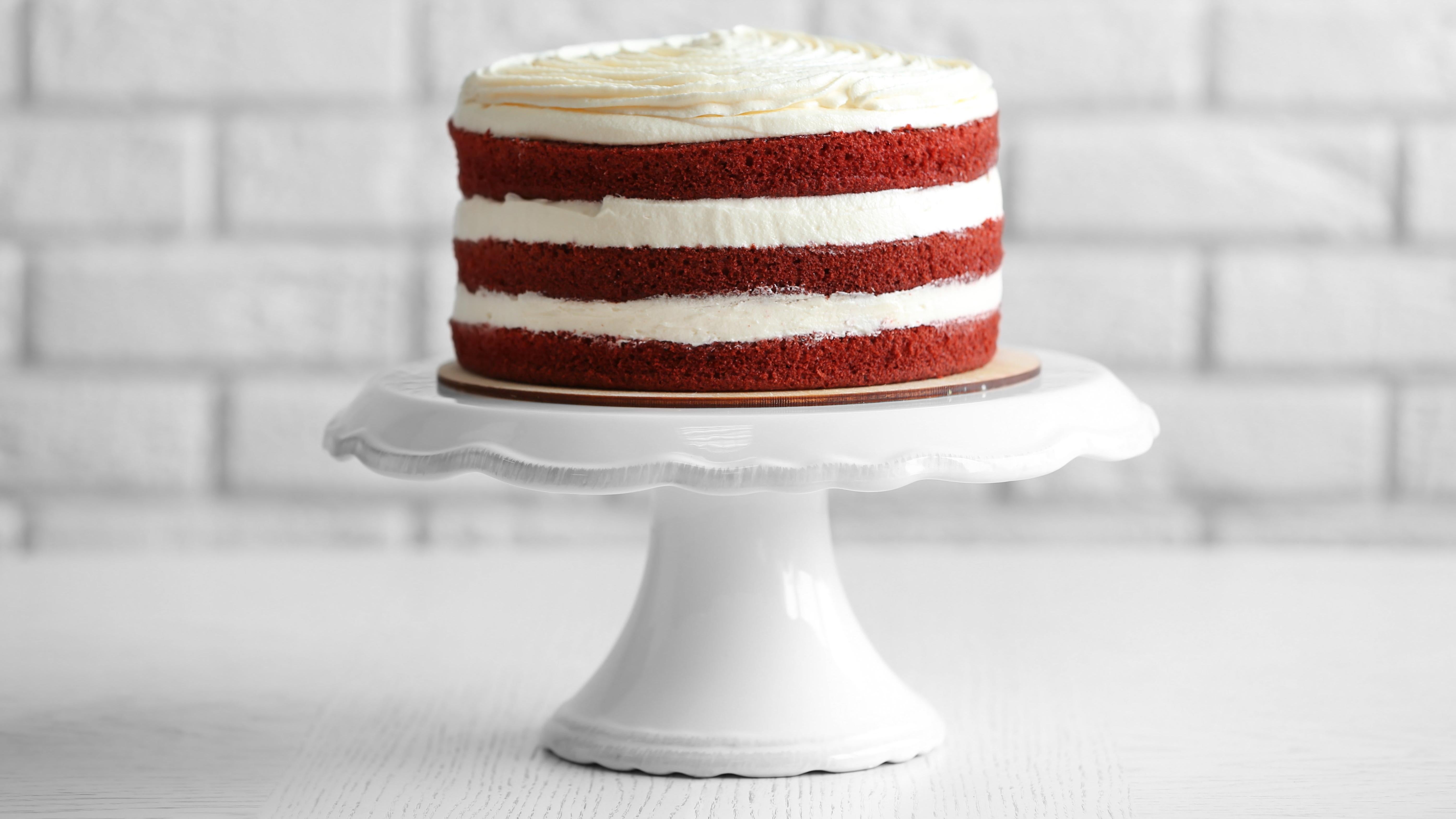
You saw this coming. They froze the layers and they froze the frosting, why not freeze fully decorated cakes? This sort of preparation is done most commonly with “house cakes,” cakes that are part of the regular rotation and have a standard design. Special order cakes (where you pick the filling and the flavour combinations) are usually assembled within a day or two of your pick up date. Does this affect the flavour, or the quality? Nope. The layers, the frosting, and the fillings freeze just fine and deliver excellent flavour once thawed.
I don’t freeze fully frosted cakes at home because special occasions that warrant a cake don’t really sneak up on me. However, this does bode well for leftover cake. Next time you host a party and everyone fills up on the charcuterie, at least you know you can freeze the seven layer chocolate torte that no one touched. My advice is to slice it into individual servings and then freeze it, so you can pull out a single piece to thaw when a dessert emergency strikes.
Par-baked breads
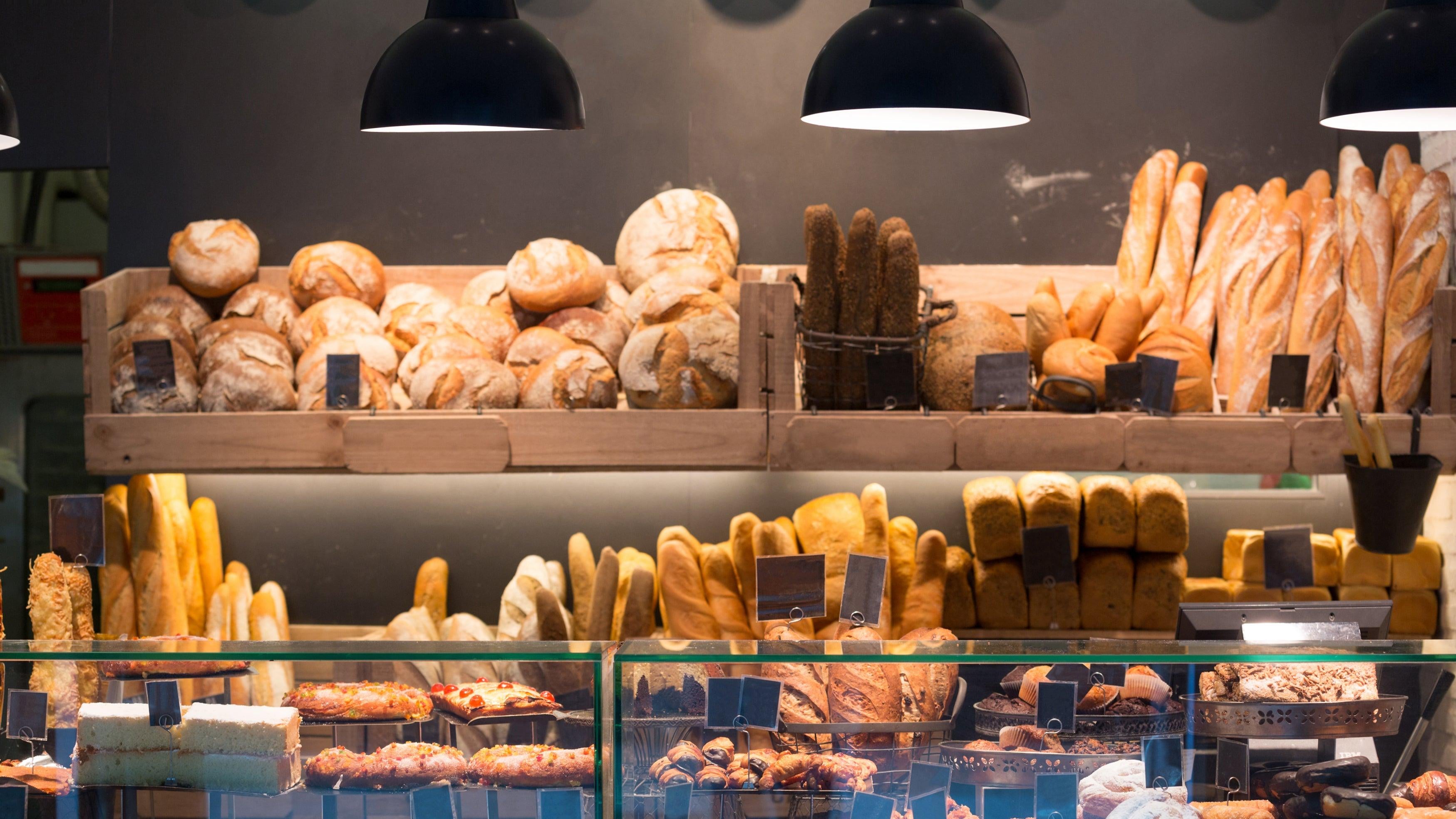
This is the sneakiest of all bakery freezes. Especially true of grocery store bakeries, a good deal of “freshly baked” bread has been ordered par-baked from a bread commissary, frozen, and shipped. Par-baking, or partially baking, is when the item is technically cooked, but just shy of finished. You stop cooking it after the expansion has occurred, and the structure has set, but just before browning has happened. Bread isn’t the only thing that can be par-cooked, but it par-cooks particularly well. You can fully cook the bread, freeze it solid so it can ship without injury and inhibit the growth of mould, then “refresh” the bread in the oven at a later date in the intended store. The final bake takes mere minutes, and gives it a crisp crust without over-browning. Now the store can label it “freshly baked,” or “baked in-house” and still sleep at night.
I rarely do this at home because if I make bread I immediately consume it. However, I find this technique is very useful for dinner roll prep before a big dinner event like a birthday or Thanksgiving. Prepare and bake the bread as you normally would, but set a timer less 15 minutes of the bake time. Start peering into the oven every few minutes after this. The bread should be fully risen, but still pale. Once you see a touch of colour blush the top, reach in and press the centre of the bread. If it’s firm, pull out the par-baked bread. If it deflates, knock the temperature down 10°C and give it another five to ten minutes. Remove it from the pan (if using), and let the bread cool completely. Wrap the bread or rolls in a plastic bag and freeze it. When you’re ready for “freshly baked” bread, pop the frozen rolls straight into a 350°F oven for 10-15 minutes, or until golden brown.
Scones, muffins, doughnuts, and biscuits
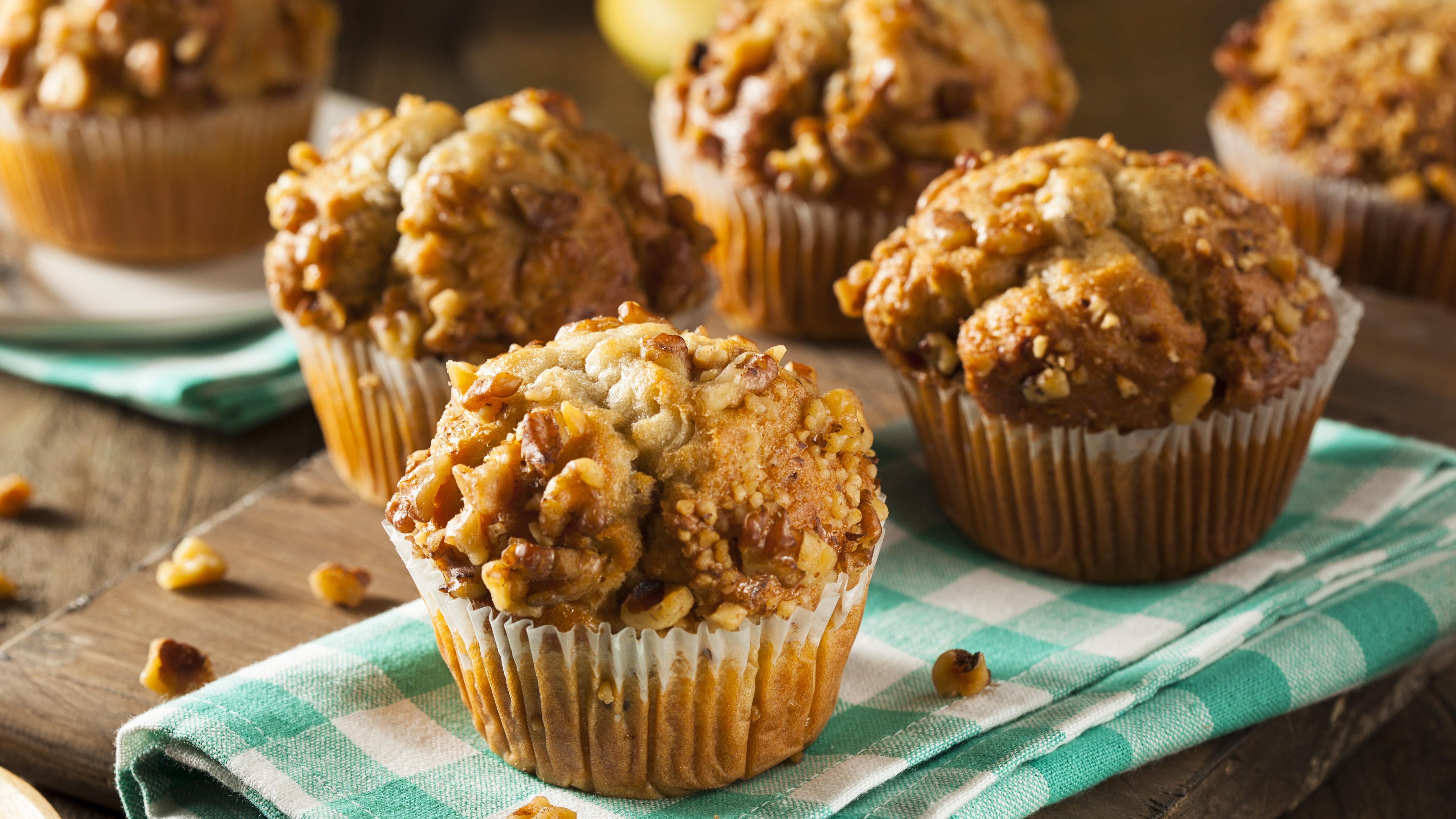
Not so different from their savoury bread cousins, scones, muffins, biscuits, doughnuts, and other sweet, breakfast breads can be frozen and thawed with ease. After baking, or frying large batches of these items, and even finishing them with icing, they can be wrapped and frozen. Thawing them is even easier. Unlike par-baked yeast breads that need a quick crisp in the oven, these sweet items are completely cooked before freezing, so they just need to come up to room temperature before serving. Sometimes you’ll even run into this a partially thawed muffin at the self-serve case during the breakfast rush–you reach for a muffin and it feels oddly cold.
Freezing your sweet morning carbs can be the answer to crazy mornings when you don’t have time to make a hot breakfast. Pull a muffin out of the freezer when you wake up, and let it thaw while you get ready. Grab it on your way out for an easy, breakfast to-go.
Cheesecakes
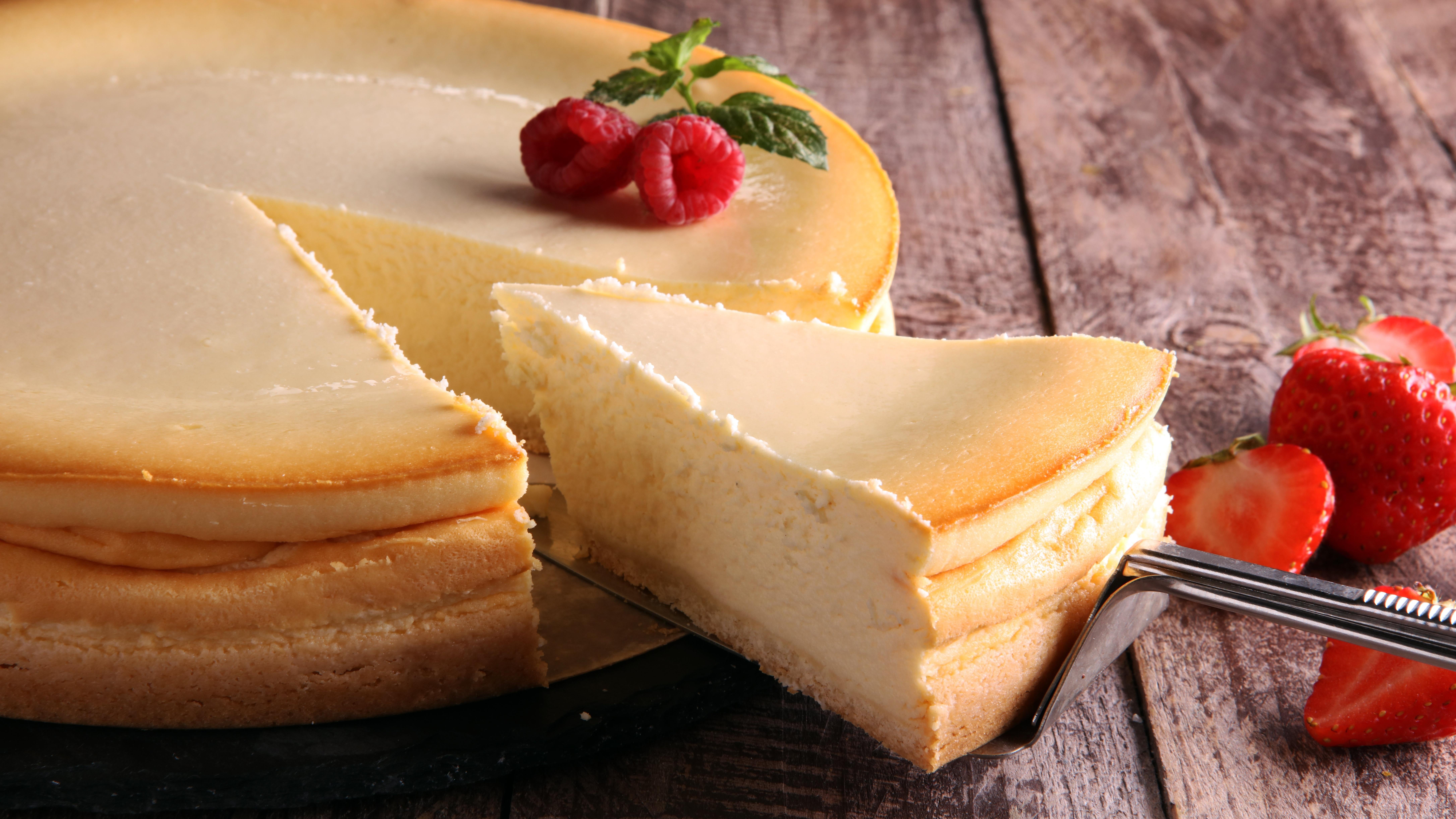
Partly to extend its shelf life, and partly because it’s never sold hot out of the oven anyway, cheesecake is the queen of frozen desserts. Once baked and chilled in the fridge, cheesecakes solidify beautifully. After freezing, they’re knocked out of the baking pan, thoroughly wrapped, and transported to the freezer for up to a month. From there, your local bakery will simply thaw them in the fridge for a few hours before they’re ready to sell (but frozen cheesecake tastes great too).
When freezing fresh or leftover cheesecake at home, be sure to wrap it well in plastic beforehand so it doesn’t lose moisture. Thaw whole cheesecakes in the fridge overnight to make sure it’s sliceable by the time you’re ready to serve it. For leftover cheesecake, slice it into individual servings before freezing so you can take out individual slices to thaw quickly on the countertop whenever the mood strikes.
Cookies and cookie dough
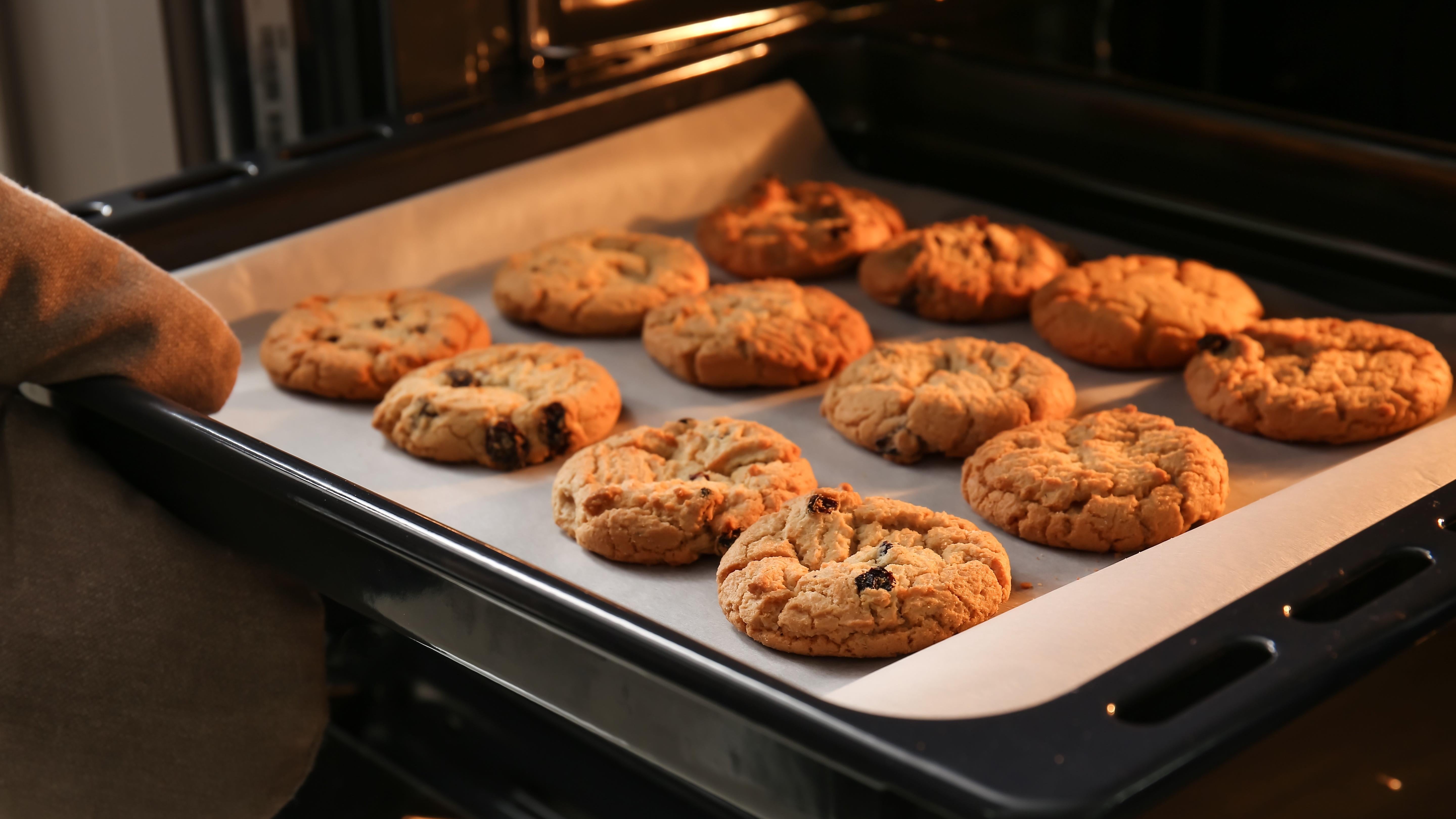
Most butter-based cookie doughs are great candidates for freezing. Bakeries will make huge mounds of dough and scoop portioned balls out onto a sheet pan. A few of them might actually get baked fresh, while the majority stay tightly packed on a sheet tray. The whole tray gets shoved in a giant plastic bag and transferred to the freezer. Since cookies can bake in about 15 minutes (even from solid, frozen dough balls), your local bakery can pull as many as they need that day from the freezer and restock within minutes if there’s an unexpected cookie rush.
Not all cookies are butter-based. Some are made with delicate whipped eggs, or have a raw dough that doesn’t take well to freezing, like madeleines or tuiles. Cookies like this also get frozen, but instead of freezing them raw, it’s done post-bake. When they’re needed, they’re removed from the freezer and thaw to their former glory within minutes.
You can freeze butter-based cookie dough at home either pre-portioned or in a slab. Pre-portion your drop cookies (cookies that you scoop and drop, like chocolate chip or oatmeal) so you can bake two or three on a whim. In this case, scoop the cookie dough into individual-sized balls and place them onto a sheet tray. The cookies can sit closely together and touch slightly, so you can likely fit a whole batch onto one tray. Put the whole tray in the freezer for an hour or so, until they’re solid. Dump all of the frozen cookie balls into a plastic zip-top freezer bag and store them in the freezer. For cookies that you’ll make into cut-outs (gingerbread or shaped sugar cookies), divide the dough in half and roll each out into a flat disc about a half inch thick. This will help them thaw quicker when you need them. Double wrap the cookie slabs and store them flat in the freezer. Well-wrapped, deeply frozen cookie dough can keep excellently for eight months to a year.
For leftover, baked cookies that you just can’t seem to get through (or you just like to prepare for inevitable cookie cravings), let them cool completely and transfer the entire sheet tray to the fridge for an hour or so until the cookies are solid. Then dump them into a freezer safe bag for storage. Pull out individual cookies as needed and let them thaw on the counter briefly, or skip that part and deliver them frozen and cold into your mouth.
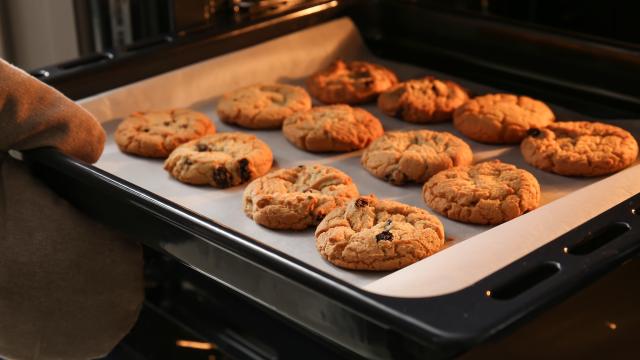
Leave a Reply
You must be logged in to post a comment.